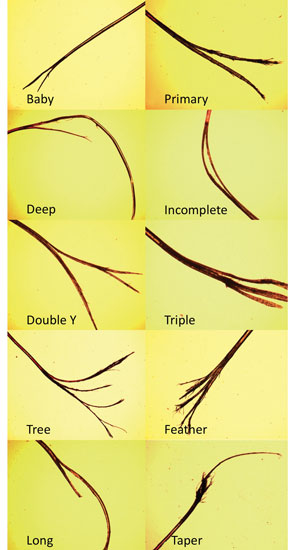Effective Ways to Wrap an Ankle for Optimal Support in 2025

Effective Ways to Wrap an Ankle for Optimal Support in 2025
Injuries to the ankle can happen to anyone, whether you're an athlete or just going about your daily activities. Knowing how to wrap an ankle correctly is not just important for those who participate in sports, but also for anyone looking to provide immediate care for themselves or others following an injury. Proper ankle wrapping can reduce swelling, stabilize the joint, and provide the necessary support to prevent further damage. In this article, we will explore effective ankle wrapping techniques, the best uses for different types of wraps, and practical methods to optimize ankle support.
Comprehending these techniques is essential as they not only enhance recovery time but also empower individuals with the knowledge they need to assist themselves and others in injury situations. We will cover basic steps for properly wrapping an ankle, different techniques for supporting an injured joint, and essential tips for using various bandage types. By the end of this article, you will be equipped with the tools to apply the best ankle support methods for injury treatment and prevention.
Key takeaways from this guide include the differences in ankle bandage types, step-by-step procedures for effective compression wraps, and expert recommendations for maintaining ankle health. As we delve into the practical applications of these wrapping methods, you'll find insights that can enhance your knowledge of ankle care.
Understanding Ankle Injury Types and Their Treatment
Before learning how to wrap an ankle effectively, it’s crucial to identify the various types of ankle injuries. The common forms include sprains, strains, and fractures. A sprained ankle is often characterized by overstretched or torn ligaments, while a strain involves muscles or tendons. Fractures indicate more severe damage, where a bone has broken. Each type of injury requires a distinct approach in treatment and wrapping techniques.
When treating a sprained ankle, the R.I.C.E. method—Rest, Ice, Compression, and Elevation—is widely recommended. Here, we will focus on the compression aspect, which includes wrapping the ankle to support the joint. Understanding the injury helps inform your approach to wrapping; for instance, sprained ankles usually benefit significantly from a secure wrap that limits movement.
Common mistakes made when treating ankle injuries include applying a bandage that is too tight, which can restrict circulation, or too loose, failing to provide adequate support. Recognizing these potential errors is essential in implementing effective ankle wrapping methods. Building on this understanding of injuries, we can now dive into specific ankle wrapping techniques that can help in recovery and stabilization.
Step-by-Step Guide on How to Wrap an Ankle Correctly
Now that we've established the types of injuries and their treatments, let's discuss how to wrap an ankle effectively. Here are the steps for using an elastic bandage to ensure optimal support:
Preparing for Wrapping
Before diving into the wrapping process, it’s important to gather your materials: an elastic bandage or an ACE bandage, scissors, and possibly some ice packs if swelling is present. Ensure that the affected area is clean and dry to enhance the bandage's adherence and comfort. It’s also crucial to assess the ankle to ensure there are no severe injuries that might require medical attention.
Initial Placement of the Bandage
Start by placing the end of the bandage on the outer side of the ankle, just above the heel. Wrap it around the ankle in a circular motion, applying moderate pressure to provide effective support without cutting off circulation. Overlap each wrap by about half the width of the bandage to create a secure hold while ensuring mobility.
Wrapping Technique for Support
A basic wrapping technique involves making figure-eight patterns around the ankle. After the initial rounds, bring the bandage around the heel, wrapping it back across the top of the foot and returning to the starting position. This crossover essentially forms a supportive base that stabilizes the ligaments around the ankle joint.
Post-Wrapping Adjustments
After securing the bandage, check for tightness by ensuring that you can slide a finger under the bandage layer. If it’s too tight, unwind and reapply with less tension. It’s essential to find the right balance between compression and comfort. Following this, you can assess any swelling and adjust the wrap as necessary.

Different Types of Ankle Wraps and Their Effective Use
Different wraps serve various purposes and choosing the right type is crucial for injury management. Here’s an overview of common bandage types and their applications:
Elastic Bandages for Compression
Elastic bandages are typically the go-to choice for providing compression. They can reduce swelling drastically and are adjustable, making them perfect for various sizes and injuries. The use of an elastic bandage for ankle wraps is particularly beneficial when dealing with sprains, as they provide support while enabling some movement.
Tape Wrapping Techniques
Another effective method involves using sports tape. This is ideal for athletes who need a firmer hold. Taping techniques can vary from basic anchor strips to advanced functional taping that mimics ligament function. Designed to keep the ankle stabilized during physical activity, tape wrapping can significantly improve performance without risking further injury.
Specialty Ankle Wraps
Specialized wraps, such as air casts or ankle braces, can offer additional support and protection for chronic ankle instability or during rehabilitation stages. They come with various features, including adjustable straps and cushioning that conform to the ankle’s anatomical structure, promoting healing while maintaining comfort.

Emergency Ankle Wrapping Techniques
Understanding how to quickly and effectively wrap an ankle in emergency situations is also vital. Here, we address techniques for applying a quick wrap when time and resources are limited:
Fundamentals of Emergency Wrapping
In emergencies, prioritize immobilization using available materials, like cloth or gauze if no bandages are on hand. Ensure that it is snug enough to stabilize the joint but not inhibit blood flow. This wraps method aims to temporarily secure the area until professional medical help can be accessed.
Importance of Immediate Care
Timely wrapping can make a significant difference in the outcome of an ankle injury. Prompt action can reduce pain and prevent further swelling. Always monitor the wrapped area for signs of severe injury, as well as symptoms like intense pain or discoloration, which may indicate a serious issue requiring immediate medical intervention.
Long-Term Care for Ankle Injuries
Post-wrapping, it is essential to address the recovery process. Keeping a close eye on your ankle's condition during the healing period is necessary and consistent follow-ups for rehabilitation exercises can significantly enhance recovery efforts. Seek advice from medical professionals for tailored rehabilitation programs, ensuring a comprehensive understanding of your ankle's needs.
Q&A Section on Ankle Wrapping Techniques
Q: What material should I use to wrap my ankle effectively?
A: Elastic or cohesive bandages are preferred for their adjustable compression and comfort. Avoid using rigid materials unless medically advised.
Q: How tight should the bandage be when wrapping?
A: The bandage should be snug enough to provide support without cutting off circulation. You should be able to slip a finger under the wrap.
Q: How often should I reapply the bandage?
A: Reapply after every few hours, or earlier if the elasticity diminishes or the wrap loosens due to swelling.
Q: When should I seek medical attention for an ankle injury?
A: If you experience intense pain, difficulty moving the ankle, or visible deformities, seek professional help as soon as possible.
Q: Can ankle wrapping help in injury prevention?
A: Yes, proper ankle support techniques can prevent both sprains and strains during physical activities.